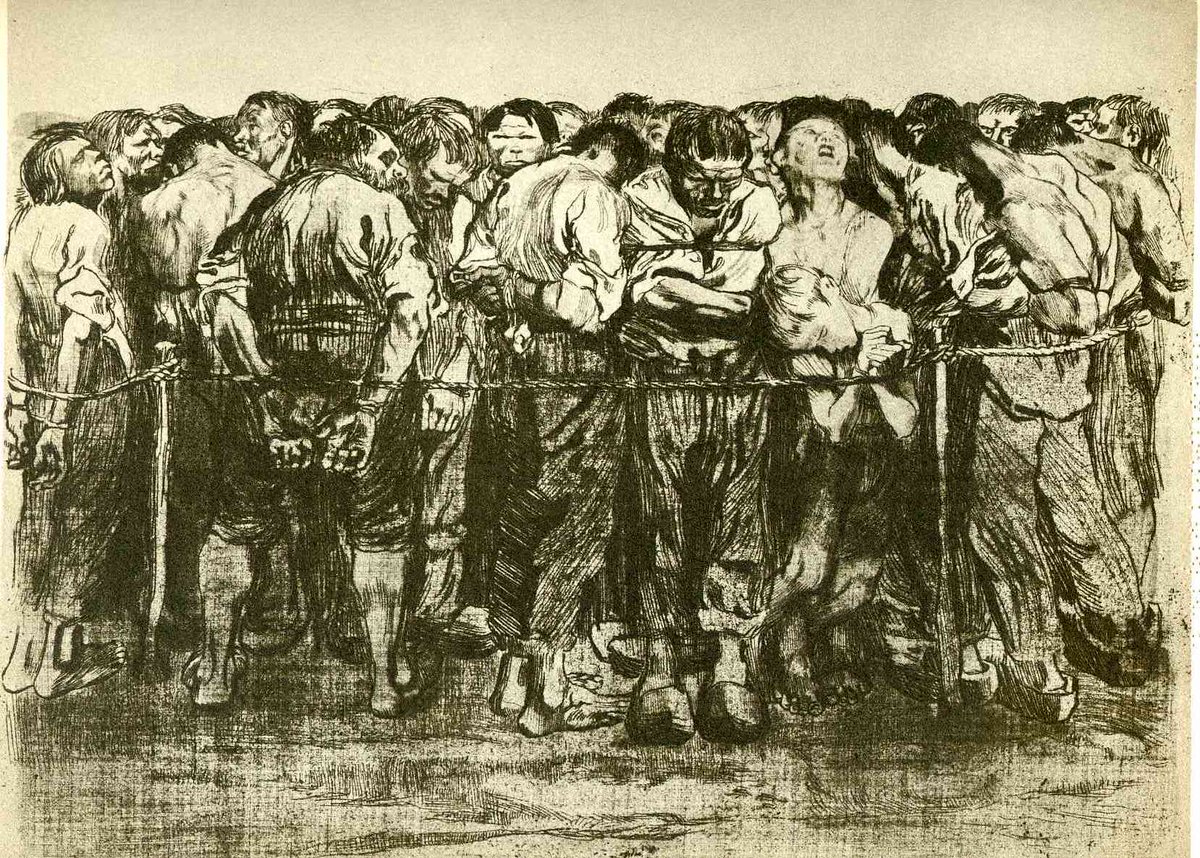Reminder that Tolkien was a devout Christian.
Into his books he wove a profound (but not heavy-handed) Christian message - one that inspired millions.
8 things to know about his remarkable life... 🧵
Into his books he wove a profound (but not heavy-handed) Christian message - one that inspired millions.
8 things to know about his remarkable life... 🧵

1. He wasn't a writer
Tolkien was 45 when he published his first book. It was his astonishing life experience beforehand that led him to become a great artist.
This was his résumé before becoming an author...
Tolkien was 45 when he published his first book. It was his astonishing life experience beforehand that led him to become a great artist.
This was his résumé before becoming an author...

• Linguist (spoke ~15 languages)
• Code-breaker (recruited for WW2, though not called into action)
• Conlanger (invented his first language age 12)
• Soldier (fought at the Somme in WW1)
• Professor (taught Anglo-Saxon studies at Oxford)
• Code-breaker (recruited for WW2, though not called into action)
• Conlanger (invented his first language age 12)
• Soldier (fought at the Somme in WW1)
• Professor (taught Anglo-Saxon studies at Oxford)
2. He set out to write a mythology for England
He knew that cultures need foundational stories and myths to guide them through life. Besides the legends of King Arthur, he thought England lacked the rich mythology of other traditions - Greek, Celtic, Germanic, Scandinavian.
He knew that cultures need foundational stories and myths to guide them through life. Besides the legends of King Arthur, he thought England lacked the rich mythology of other traditions - Greek, Celtic, Germanic, Scandinavian.

3. He hated Disney
Tolkien disliked their sugar-coated approach to storytelling, and kept the rough edges in his own stories. The Hobbit was written for kids, but it contains anger, hardship, horror, evil and death.
That's why his books are so enduringly real.
Tolkien disliked their sugar-coated approach to storytelling, and kept the rough edges in his own stories. The Hobbit was written for kids, but it contains anger, hardship, horror, evil and death.
That's why his books are so enduringly real.

4. He was a Christian, not an ideologue
In his own words: “The Lord of the Rings is of course a fundamentally religious and Catholic work.”
There are many Christian symbols woven throughout: Frodo, Gandalf and Aragorn are clearly Christ figures, for example.
In his own words: “The Lord of the Rings is of course a fundamentally religious and Catholic work.”
There are many Christian symbols woven throughout: Frodo, Gandalf and Aragorn are clearly Christ figures, for example.

But the beauty of LOTR is the lack of moralizing messages. Tolkien disliked allegory, which he knew led to two-dimensional stories.
Tolkien's messages instead lie mostly in the background: characters of great virtue and small acts of courage - which resonate with ALL readers.
Tolkien's messages instead lie mostly in the background: characters of great virtue and small acts of courage - which resonate with ALL readers.

5. He fought on the front lines in WW1
His stories are relatable because they're real. He saw the Dead Marshes in real life: no man's land at the Battle of the Somme.
Through sheer courage and imaginative strength, he turned the horrors of his life into art.
His stories are relatable because they're real. He saw the Dead Marshes in real life: no man's land at the Battle of the Somme.
Through sheer courage and imaginative strength, he turned the horrors of his life into art.

6. He opposed industrialization
He saw the peaceful England of his childhood fall prey to industrialism, which he resisted via storytelling - like the Ents’ siege on Isengard.
He wanted us to turn away from the grind of modernity and live simpler lives, surrounded by beauty.
He saw the peaceful England of his childhood fall prey to industrialism, which he resisted via storytelling - like the Ents’ siege on Isengard.
He wanted us to turn away from the grind of modernity and live simpler lives, surrounded by beauty.

7. He was a Hobbit
“I am in fact a Hobbit (in all but size),” he wrote. “I like gardens, trees and unmechanized farmlands; I smoke a pipe, and like good plain food.”
“I am in fact a Hobbit (in all but size),” he wrote. “I like gardens, trees and unmechanized farmlands; I smoke a pipe, and like good plain food.”

At the end, the hobbits destroy the ring - rendering the great wars meaningless. A small act of mercy made that possible: Bilbo sparred Gollum's life, who led to the ring's eventual destruction.
It's in the “little people” that Tolkien puts his faith, not great armies or heroes.
It's in the “little people” that Tolkien puts his faith, not great armies or heroes.

8. He could draw (and paint)
Many of the original illustrations in The Hobbit were produced by Tolkien himself. Here are some of his watercolors:

Many of the original illustrations in The Hobbit were produced by Tolkien himself. Here are some of his watercolors:


This week's newsletter discusses Tolkien in much more detail. Free to join 👇
culturecritic.beehiiv.com/subscribe
culturecritic.beehiiv.com/subscribe
• • •
Missing some Tweet in this thread? You can try to
force a refresh

























